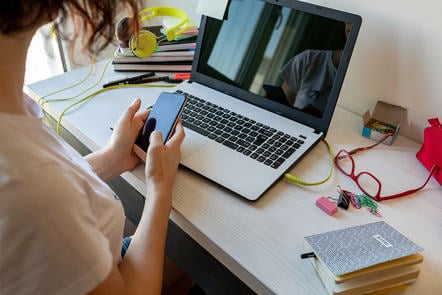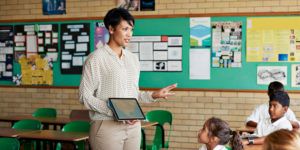Explore: The education system in the Philippines
We explore education in the Philippines, looking at the history, facts and stats, and how the education system works.

The Philippines recently underwent a major overhaul of its education system, extending basic education from 10 to 13 years to bring it in line with the education systems of other Asian countries. As a result, young graduates in the Philippines are becoming increasingly competitive in the jobs market, both at home and abroad. Here, we take a look at education in the Philippines, from pre-colonial times to the present day.
A brief history of the Philippines education system
Before the Spanish arrived in 1521, there was little formal education in the Philippines. Fathers taught their sons how to obtain food, while mothers taught their daughters how to do household chores.
A Spanish influence
Education was formalised with the arrival of the Spanish; Spaniards, mestizos (mixed Spanish/Filipino people) and wealthy Filipinos were given priority, creating an educational mismatch in the Philippines. Most native people were excluded from the more prestigious educational institutions, as the colonists believed that quality education might threaten their hold over the population. The curriculum at the time involved the study of Christian doctrine, Spanish language and history, mathematics, agriculture, geography, etiquette, and singing; girls were also taught sewing.
At the end of the Spanish-American War in 1898, the Americans took over the Philippines. English was adopted as the primary language of education, and schools became more secularised.
A centralised public school system was established in 1901, with 1,000 teachers brought over from the USA to make up for a shortage of teachers at home. Education from age seven and up became compulsory, and school supplies were provided to students for free.
During WWII
When the Japanese occupied the Philippines in 1942 during the Second World War, they attempted to discourage the use of English and adopt Japanese as the medium of education. However, school enrolment was low, as families felt that their children were safer at home during this time.
The Japanese also established the Department of Instruction, which would later become the Department of Education in 1947. The Japanese departed the Philippines in 1946, and the Philippines finally gained full independence.
Modern Philippines
Today’s education system in the Philippines most closely resembles the American model. English remains the primary medium of instruction, although bilingual teaching of maths, science and literature (in English and Tagalog) was introduced under Ferdinand Marcos in 1974.
The establishment of the Technical Education and Skills Development Authority (TESDA) in 1994 reflected a shift in government focus toward vocational education, with courses offered in practical skills such as vehicle repair and bartending.
-

 UCL (University College London) Global Education for TeachersTeaching,Politics & Society
UCL (University College London) Global Education for TeachersTeaching,Politics & Society
Facts about education in the Philippines
There are three agencies that handle the different levels of the Philippines education system: The Department of Education (DepEd) oversees basic (pre-university) education. The Commission on Higher Education manages tertiary and graduate education, and the Technical Education and Skills Development Authority (TESDA) oversees technical-vocational courses and middle education.
Most of the problems in the Philippines education system stem from a lack of funding: low teacher salaries, a shortage of classrooms and lack of facilities such as laboratories. Additionally, there is a lack of educational equality between regions: government policy tends to favour schools near Manila, with regions farthest from the capital (such as Mindanao) showing lower levels of student performance.
Despite these issues, the education system in the Philippines is still seen as one of the most developed in Asia: rates of basic education completion, higher education participation and adult literacy are comparable to far more developed economies in Hong Kong, Singapore and South Korea.
Like many other developing countries, one of the major problems in the Philippine education system is that of ‘brain drain’ – the departure of talented students, graduates and teachers to other countries. Until the opportunities at home equal the number of skilled graduates coming out of the education system, this is a problem that looks set to continue.
How does the education system in the Philippines work?
The pre-university education system in the Philippines is the K to 12 Program (also known as K-12), which covers 13 years of education from kindergarten to Grade 12. It was introduced over a six-year period from 2011 to 2017, to bring the Philippines education system in line with the rest of the world.
Previously, the Philippines had a 10-year basic education program, the last country in Asia to do so. Lessons are now taught in the language local to the area.
The K-12 reforms also saw the establishment of a parallel education system called the Alternative Learning System, or ALS. ALS exists as a substitute for conventional education, in cases where children are unable to attend and finish formal basic education. For example, this may include remote communities without schools.
ALS takes a more informal approach to education, encouraging self-study and flexible learning timelines based on student availability. Teaching is usually conducted at community (barangay) centres, in libraries or at home, and is managed by mobile ALS teachers. Through ALS, the government improves educational equality in the Philippines.
Basic education in the Philippines
Kindergarten and elementary school
Central to the K-12 reforms was the provision of one year of kindergarten schooling for every child in the Philippines, which is done before elementary school. Elementary school in the Philippines covers grades 1-6.
The K-12 reforms to elementary schooling included a curriculum better suited to the needs of Christian and Muslim pupils; Muslim children now have the opportunity to learn Arabic.
Junior and senior high school
Junior high school in the Philippines covers grades 7-10. Senior high school (SHS) in the Philippines covers grades 11-12 and was introduced in 2016 as part of the K to 12 program.
As well as following the core curriculum, students will choose to specialise in one of four tracks: Academic (including business, STEM topics and humanities), Technical-Vocational-Livelihood (including TESDA courses in cookery and welding), Sports, and Arts & Design.
To assist in selecting a learning track, students undergo assessments to determine their strengths and interests. These include an aptitude test, a career assessment exam and activities designed to help the student to choose their specialisation. The tracks that are offered vary by the resources available in the area and the interests of the students.
The senior high school program was designed to bridge the gap between school and work: local companies partner with schools to offer technical and vocational courses, and students can get work experience while studying.
The SHS curriculum also includes entrepreneurship courses, to give students the option of starting their own business after graduation rather than going to college.
Tertiary education in the Philippines
Philippine tertiary education typically takes four or five years, or up to eight years for subjects such as law and medicine. Postgraduate study takes an additional two years or more. Classes begin in June and end in March the following year; most universities follow a semester pattern, with a few following a trimester pattern.
Colleges are classified as tertiary institutions that typically offer a handful of professional or specialised courses such as Computing, Maritime Studies or Nursing.
Universities, by definition, must offer at least six four-year undergraduate courses, which must include Basic Science, Mathematics, Liberal Arts and Social Sciences. Colleges and universities may be public or private: the latter may be either religion-based or secular.
What is the education policy in the Philippines?
Recent education policy in the Philippines has focused on expanding access to all levels of education. The K-12 reforms of 2011-2016 were rolled out successfully, despite initial scepticism by President Rodrigo Duterte as to whether the Philippines’ teachers, schools and administration were properly equipped to implement the reform.
K-12 builds upon the reforms initiated by Duterte’s predecessor, Benigno Aquino III, whose ‘10-point plan’ sought to build more schools, expand vocational course options and improve science education in the Philippines.
As a compliment to K-12, the government launched the Education for All (EFA) initiative in 2015, which aims to ensure that all Filipinos achieve what UNESCO calls “functional literacy”: the ability to read, write and do basic calculations. EFA focuses on providing education for out-of-school adults and young people and on eliminating school drop-outs, thereby decreasing inequality within the Philippines education system.
An increase in funding
These recent reforms have been made possible due to a substantial increase in funding, after years of underinvestment. The World Bank estimates that government public spending in the Philippines increased by 60% in real terms between 2010 and 2015, providing the means to hire more teachers and decrease the student-to-teacher ratio.
That said, the Philippines still spends far less on education as a proportion of GDP than many other similar and neighbouring countries, spending approximately 3.5% in 2017. By comparison, Vietnam and South Korea spend around 5% of GDP on education.
Inclusive education in the Philippines
In recent decades, the government has sought to create a more inclusive education system in the Philippines. In 2004, DepEd issued an order that called for a standard curriculum in Muslim schools – the majority of which are concentrated in Mindanao – due to concerns that the highly specialised teaching taking place in private Muslim schools was “turning students into virtual foreigners in their own country.”
However, DepEd also acknowledged that “public schools do not include Arabic language and Islamic values, making the Muslims ignorant of their religion.” As a result, Muslim school now include a course in Arabic Language and Islamic Values (ALIVE) as part of their core curriculum.
Final thoughts
Education in the Philippines has come a long way since pre-colonial times. While the standard of education is high, young would-be graduates can always benefit from expanding their knowledge. With the courses we’ve linked to throughout this article, you can augment your formal education and enhance your employability when you’re ready to enter the world of work.












